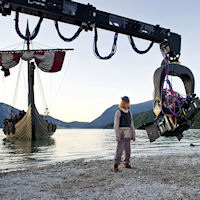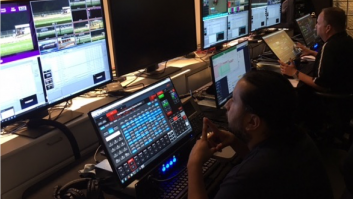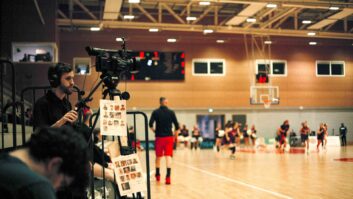
As Germany’s first live action 3D feature Vicky and the Treasure of the Gods is released, TVBEurope talks to the project’s Lead Stereographer and CEO of Stereotec, Florian Maier. The family feature, which is a Constantin Film production in collaboration with Rat Pack Filmproduktion and directed by Christian Ditter, is a sequel to the 2D hit Vicky the Viking.
Not only is it Germany’s first live action 3D film, but it was shot on mostly German gear. Stereoscopic Technologies (Stereotec) equipped the production with its rig technology, while Maier himself supervised from the first test shoot to depth grading.
It was shot using four Arri Alexa cameras, recording to two Codex Portable recorders, with a complete on-set 3D playback and viewing trailer and all grip and 3D equipment supplied by Arri.
“Our approach was not to play on cheap gimmicky effects but to achieve the perfect balance between a 3D, which makes you feel the spaces of the landscapes, that shows a natural roundness to faces, mixed with shots where you deliver ‘wow’ effects, but only when related to the story and never in way that it would exceed the limits of human vision,” says Maier.
He cites one example of a scene in which the central character is trying to extract another’s rotten tooth by means of a bow and arrow with the arrow coming out of the screen plane.
Maier says that in devising the depth script with the cinematographer, they decided not to use great focal lengths or excessive wide angles to avoid miniaturisation and cardboard-looking 3D.
“Most live action movies use the wrong lens selection because the DP comes from a 2D background and hasn’t learned how to shoot in 3D,” he says. “In 2D you could choose the size of a shot and what you cut to, but now you have to think about how close you want to bring an object to the audience or how close you want to be to a character emotionally, or how much you want to distance yourself from it.”
For certain scenes where a 2D director would use multiple angles and cut multiple times, Maier choreographed a fluid crane movement that took in wide, medium, close up, and reverse shots in what he describes as ‘a more normal way of looking at the scene’.
“Instead of six different shots, we caught them all in a single camera movement, which is much more like how we would view the scene in real life,” he says. “Part of the reason we are able to do this is because our rigs are made entirely of carbon fibre, not aluminium. That means they are incredibly light (around 18kg) and incredibly stable, even with heavier cameras.”
Two Stereotec midsize rigs were used, enabling the film to be shot to the same shooting schedule as the original film. Both rigs were equipped with motorised controls and a data capture system. For crane shots they used a Super Scorpio telescopic crane and a Supertechno 50 with a modified 3D remote head. Arri Film & TV built a new on-set service trailer with space for several workstations: a 65-inch 3D monitor, 2D broadcast monitor, grading panel, and eight seats for screenings.
“We were able to shoot to the same schedule as the first film,” says Maier, in part, he says, because lenses could be changed on the Stereotec rigs in five minutes on average.
Harald Schernthaner, head of Arri post-production, reports: “Stereotec rigs remain stable during pans or when mounted on a crane. This led to significant savings in time and money during post production.” Maier is currently working on the Russian Film Group’s Alexa-shot Viy in 3D, having earlier this year shot on Paramount’s Hansel and Gretel 3D, starring Jeremy Renner.
“We shot tests and when the producers saw that we could shoot in 3D just as fast as 2D and cheaper than a post conversion, they increased the 3D shooting days from 12 to 39,” says Maier. “I am convinced that stereoscopic movie making will be successful, if it combines technological precision with knowledge about human physiology, practical experiences and a passion for filmmaking.”
A blow-by-blow account of the Vicky dailies workflow using Colourfront and post route is described by David Fox here:







